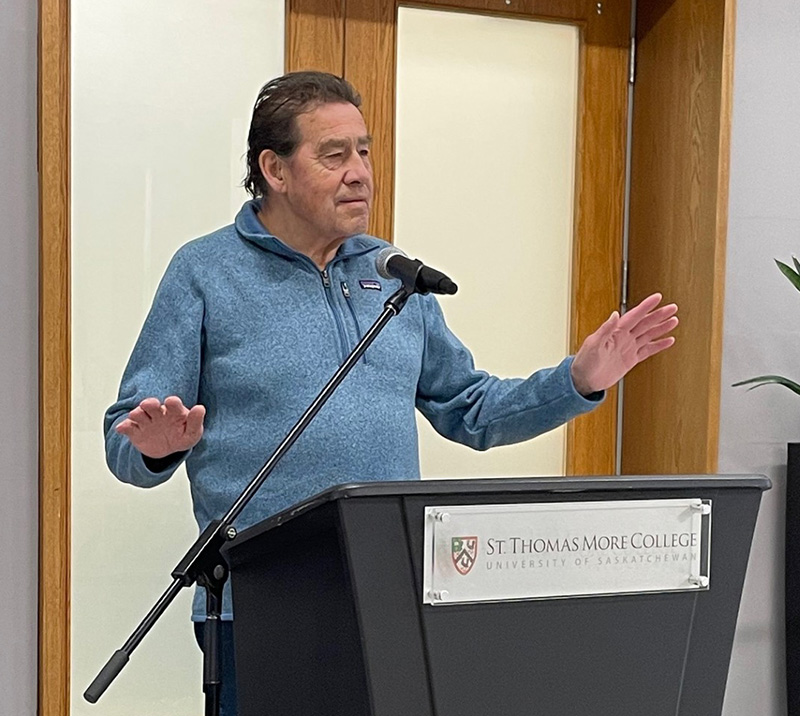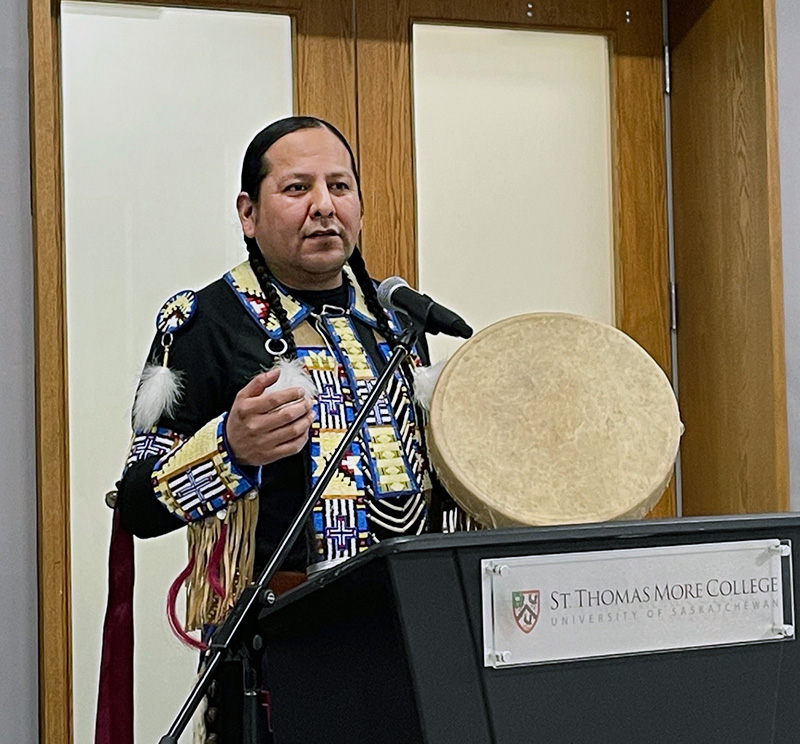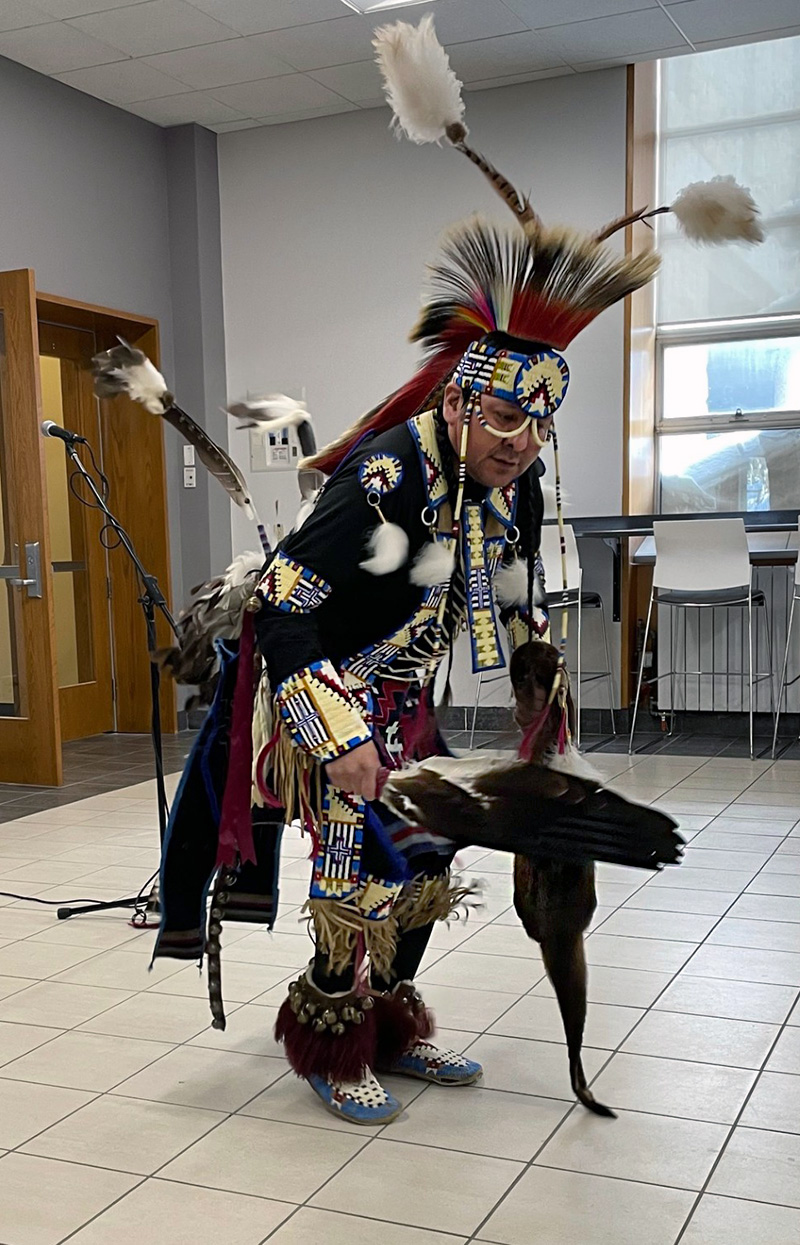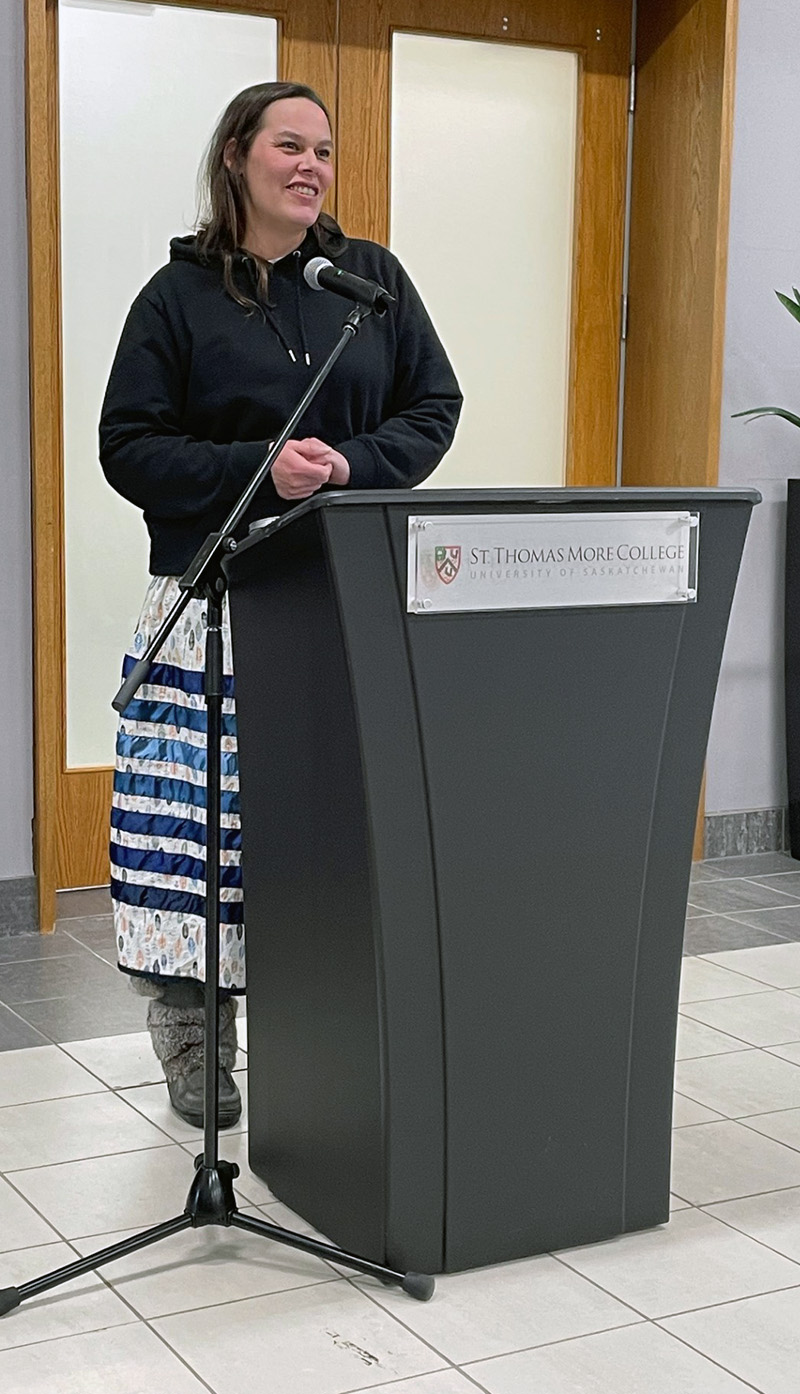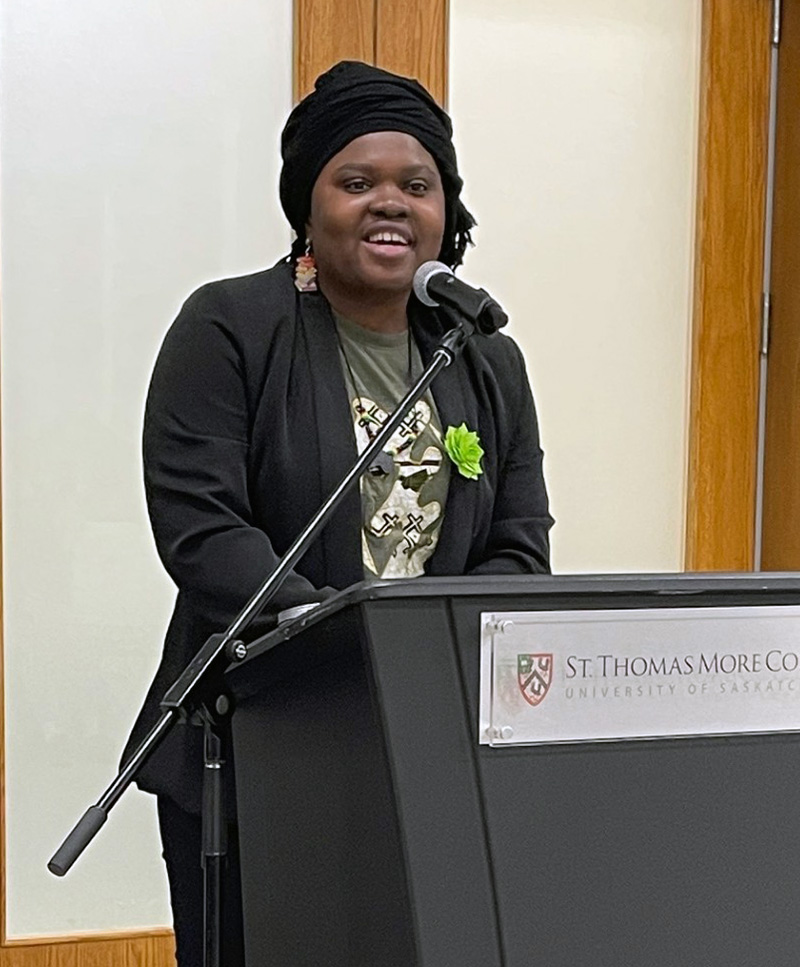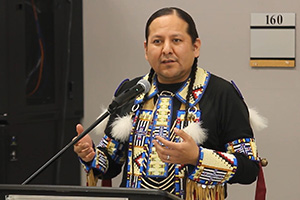
Achimo 2025 showcases power of storytelling across the world
STM College continues reconciliation journey by embracing traditional ways of knowing
By Paul Sinkewicz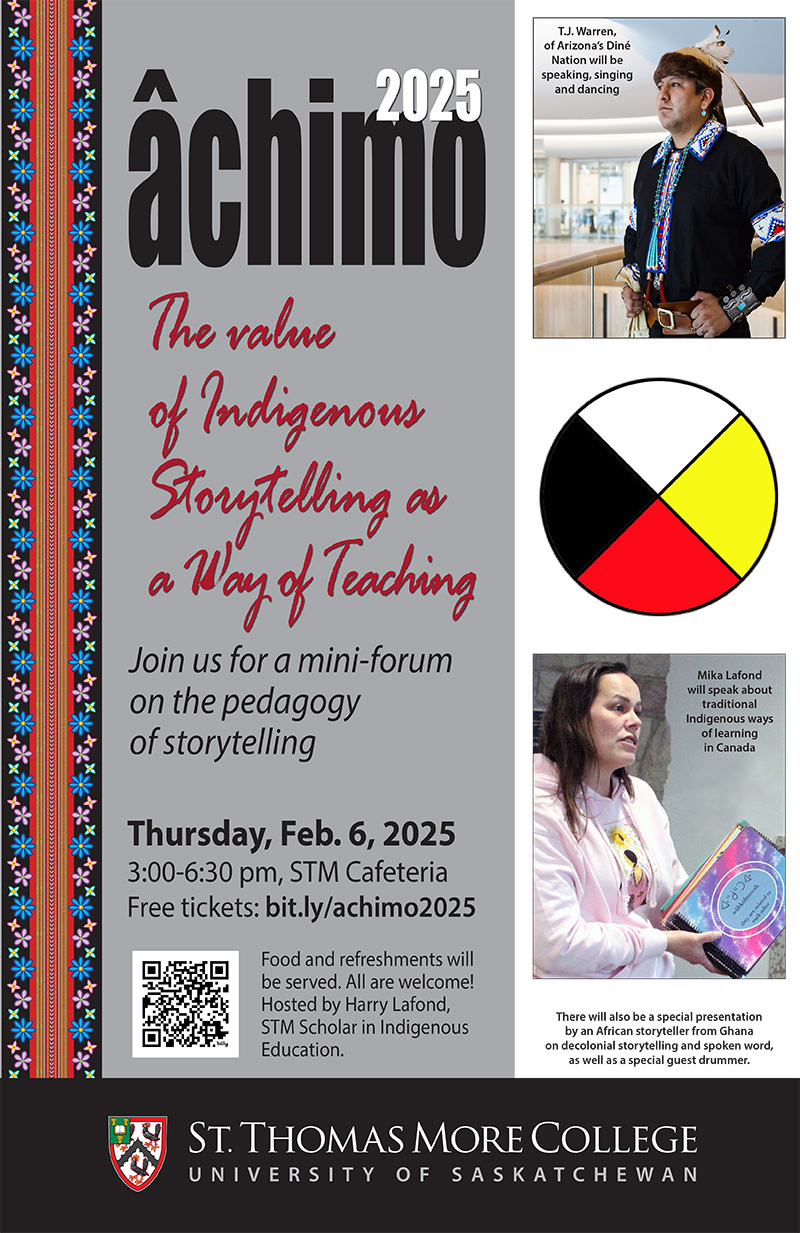
“A long time ago they used to say ….”
That is how a story begins in TJ Warren’s culture.
It is how knowledge is transmitted from one generation to the next, and to the next, and to the next. It has been done that way for thousands of years.
Warren is a member of the Diné Nation of Arizona, commonly referred to as Navajo, and he learned storytelling at the foot of his grandfather in his ancestral language.
“A long time ago they used to say,” is how his grandfather would start each story.
Warren is now a storyteller himself, and with each telling comes a responsibility to his ancestors -- to remember them and to represent them well, he says. He was one of the guest speakers at the 2025 Achimo celebration of storytelling at St. Thomas More College (STM).
“Everything that we carry is something that has been passed on to us from somebody, and, when we acknowledge them, it’s carrying on that understanding that you learned something. You carried something. And you are important, not only to yourself, but to others,” said Warren.
The purpose of the annual Achimo celebration of storytelling is to bring understanding and awareness of the power of stories. The fourth edition of the event, held each February during Saskatchewan Indigenous Storytelling Month, was titled: The Value of Indigenous Storytelling as a Way of Teaching.
The 2025 celebration also expanded the exploration of storytelling by including representatives from cultures outside of Saskatchewan. Other presenters included Reggie Nyamekye, originally from Ghana, speaking passionately on Decolonial Storytelling, and Moses Idowu, telling stories about his homeland of Nigeria and performing with the West African talking drum, or ‘gangan’, as well as returning Cree storyteller Mika Lafond, from the Muskeg Lake First Nation, and a longtime friend of STM.
Achimo is organized by Harry Lafond, STM Scholar in Indigenous Education, and the College’s Authentic Indigenization Action Group, this year made up of himself, Dean Schmidt, Michael MacLean, Gertrude Rompré, Henry Theissen, Kerry Stefaniuk, Sherry Richert, Jeongeun Park, and Meridith Burles.
“Achimo in the Cree language is the story. It’s the act of storytelling. And storytelling is an integral part of the Indigenous way of transferring knowledge from one generation to the next,” said Lafond. “It’s been harmed by contact, however, there is enough memory left that people continue to tell stories and continue to understand the importance of those stories.”
“It is the way of Indigenous people, not just here in Canada, but in other places, that they welcome other storytellers from other cultures,” Lafond said. “And so, we started two Achimos ago by inviting our Mennonite friends to come and share their stories. And this year, we went further afield and we invited two storytellers from the African continent. That’s the nature that we’re working with here: that sense of “Wahkohtowin” - of being connected. It reaches out to everyone. It’s not restricted to ethnic lines.”
“The welcoming occurs in many different forms, and in our case today, the welcoming is: ‘Come and tell us your story. Come and show us how you tell your story.’ ”
Warren, a lifelong powwow dancer, told the audience Indigenous stories exist in different ways: “Through our textiles, through our songs, through our dances, through our prayers, and all the different ways in which we express ourselves. Our stories exist in those, too.”
“So, today the story that I hope to share is the power of singing and dancing and cultural representation in spaces like this,” Warren said ahead of his dance. “In so many circumstances, Indigenous ways of knowing have been undervalued by our broader community and society. And today we see that changing with all these different initiatives and people creating these spaces for us.”
Dr. Carl Still, President of STM College, said educators tend to be obsessed with pedagogy and think a lot about how knowledge is passed on from teacher to student, from one generation to the next.
“Is there a best way to do it? For much of western history the lecture was the standard form of teaching. I don’t know how many people just lecture anymore,” said Still. “That was supplemented over a long period of time with seminars, which are driven by discussion at higher levels. But in recent years we’ve been introduced to things like the Talking Circle, which is also a very powerful form of dialogue. There is also storytelling. Which is another way of transmitting knowledge. And then there are performances beyond just speaking – singing, drumming, dancing – some of the things we are going to see and hear this afternoon.”
“So, there have always been different forms of transmitting knowledge and culture, but we have the privilege today of experiencing Indigenous ways of sharing knowledge and culture. And these really enrich the forms of teaching and performance that have been at STM from the beginning – all the way back to 1936.”
(Photos courtesy Michael MacLean)
Read about the previous editions of Achimo:
